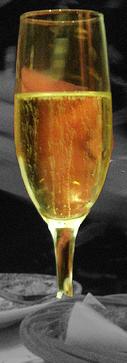Cava (Spanish wine)
Cava is a Spanish wine that holds the distinction of being a sparkling wine with a designation of origin (DO) status from Spain. The name "Cava," which means "cave" or "cellar" in Spanish, refers to the traditional storage locations used for the aging process of this wine. Cava is renowned for its production primarily in the Penedès region in Catalonia, although its production has expanded to other regions in Spain.
History[edit | edit source]
The production of Cava began in the late 19th century, with the Codorníu Winery playing a pivotal role in its development. The method of production was inspired by the traditional methods used in Champagne, France, but adapted to the local grape varieties and climate conditions of Spain. The term "Cava" was officially adopted in the 1970s to distinguish the Spanish sparkling wine from its French counterpart.
Production[edit | edit source]
Cava is produced using the traditional méthode champenoise, known in Spain as the método tradicional. This process involves a primary fermentation of the wine, followed by a secondary fermentation in the bottle. The wine is then aged on its lees for a minimum of 9 months, although higher quality Cavas may be aged for several years to enhance their complexity and flavor profile.
The primary grape varieties used in the production of Cava are Macabeo, Xarel·lo, and Parellada. However, other varieties such as Chardonnay and Pinot Noir are also permitted and increasingly used.
Classification[edit | edit source]
Cava is classified according to the dosage of sugar added after the second fermentation, which determines its sweetness level. The classifications range from Brut Nature, which has no added sugar, to Dulce, which is the sweetest.
Regions[edit | edit source]
While the heartland of Cava production is in Catalonia, specifically the Penedès region, the DO Cava designation covers several other regions across Spain. This includes parts of Valencia, Aragón, Navarra, Rioja, and more, allowing for a diverse range of styles and flavors.
Consumption and Culture[edit | edit source]
Cava is traditionally consumed during celebrations and festive occasions in Spain, similar to the role of Champagne in France. It is often served in a flute glass to preserve its bubbles and is enjoyed as an aperitif, with meals, or as a celebratory drink.
Regulatory Body[edit | edit source]
The regulatory body overseeing the production and quality of Cava is the Consejo Regulador del Cava. This organization is responsible for setting the standards for Cava production, including the permitted grape varieties, production methods, and aging requirements.
Challenges and Innovations[edit | edit source]
The Cava industry has faced challenges, including competition from other sparkling wines and internal disputes over production standards. In response, there has been a movement towards higher quality production methods, including organic and biodynamic practices, and the creation of a new classification system to highlight premium Cavas.
Search WikiMD
Ad.Tired of being Overweight? Try W8MD's physician weight loss program.
Semaglutide (Ozempic / Wegovy and Tirzepatide (Mounjaro / Zepbound) available.
Advertise on WikiMD
|
WikiMD's Wellness Encyclopedia |
| Let Food Be Thy Medicine Medicine Thy Food - Hippocrates |
Translate this page: - East Asian
中文,
日本,
한국어,
South Asian
हिन्दी,
தமிழ்,
తెలుగు,
Urdu,
ಕನ್ನಡ,
Southeast Asian
Indonesian,
Vietnamese,
Thai,
မြန်မာဘာသာ,
বাংলা
European
español,
Deutsch,
français,
Greek,
português do Brasil,
polski,
română,
русский,
Nederlands,
norsk,
svenska,
suomi,
Italian
Middle Eastern & African
عربى,
Turkish,
Persian,
Hebrew,
Afrikaans,
isiZulu,
Kiswahili,
Other
Bulgarian,
Hungarian,
Czech,
Swedish,
മലയാളം,
मराठी,
ਪੰਜਾਬੀ,
ગુજરાતી,
Portuguese,
Ukrainian
Medical Disclaimer: WikiMD is not a substitute for professional medical advice. The information on WikiMD is provided as an information resource only, may be incorrect, outdated or misleading, and is not to be used or relied on for any diagnostic or treatment purposes. Please consult your health care provider before making any healthcare decisions or for guidance about a specific medical condition. WikiMD expressly disclaims responsibility, and shall have no liability, for any damages, loss, injury, or liability whatsoever suffered as a result of your reliance on the information contained in this site. By visiting this site you agree to the foregoing terms and conditions, which may from time to time be changed or supplemented by WikiMD. If you do not agree to the foregoing terms and conditions, you should not enter or use this site. See full disclaimer.
Credits:Most images are courtesy of Wikimedia commons, and templates, categories Wikipedia, licensed under CC BY SA or similar.
Contributors: Prab R. Tumpati, MD




